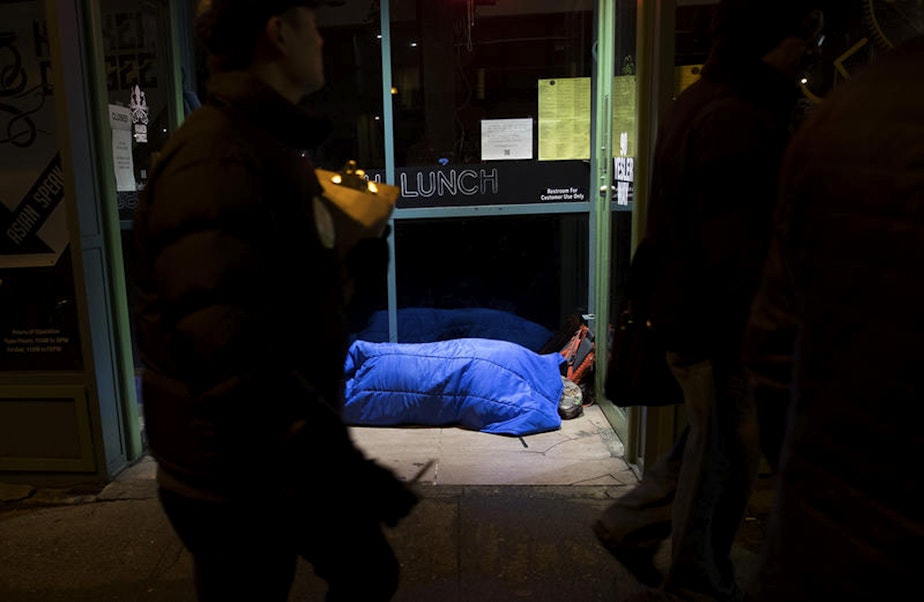The one-night count of Seattle's homeless is always an undercount. But here's why we do it

In the wee hours of Friday morning, volunteers will spread across King County to conduct the annual tally of people experiencing homelessness.
This one-night count happens every year. And the results each year are most likely an undercount. So why do we still do it?
How do we know it’s an undercount?
The one-night count (referred to officially as the point-in-time count) is just a snapshot. It only encapsulates what’s happening in the county on a single night each January. It’s also an estimate, based on people literally counting what they see.
As a result, people in hard-to-reach areas or those who want to stay out of sight can easily be missed. And the count does not include people who are couch surfing or doubled up with family members or friends.
The county has changed their methodology in recent years to make it more robust and try to get as accurate an estimate as possible, but it’s still not perfect.
“There’s no way to have a 100 percent certainty that we are counting every individual in our community experiencing homelessness," Kira Zylstra, acting director of All Home King County, the group that runs the count, said. "And so we know that this is an undercount."
The 2018 count found 12,112 individuals experiencing homelessness in Seattle and King County.
How is the count done?
Between 2 a.m. and 6 a.m. on Friday morning volunteers will cover specified geographic areas and literally count what they see.
The county used to send volunteers to hot spots, places where it was well known that people camped or slept outside. Now, they cover all census tracts, a method that’s more accurate.
Guides with current and former experiences of homelessness are also paid to go out with teams. They can help shed light on where people might be sleeping in certain areas and whether it’s safe for volunteers.
While out in their designated area, if volunteers see a tent, they’ll note that. If they see a person in a sleeping bag lying in a doorway, they’ll count that person. They’ve been trained to estimate age and have the option to note down an age bracket for individuals if they feel confident. If they see a car, van or RV that looks as if it’s being lived in – think fog on the windows of a car made by someone breathing as an indicator – they note that down, too.
Zylstra said if the outdoor count is done properly, people may not even be aware they’ve been counted.
“We don’t go peeking in tents or asking questions when people are potentially sleeping,” Zylstra said.
On the same night as the outdoor count, people staying in shelters and transitional housing are also counted. In the weeks following the count, a survey is conducted to glean more information about the demographics and experiences of people who are homeless in King County.
The surveys also help to calculate the estimated numbers from the count, Zylstra said.
“In the surveys, when asking if people are currently residing in a tent, then we’ll ask how many people are there with you.”
The same thing is done for vehicles. Zylstra said that information is compiled along with information from other communities along the West Coast to ensure there’s a large enough sample to make more accurate estimates of how many people may be in a single tent or car that's noted on the tally sheet.
If we know the results are an undercount, why do we still do it?
There are a couple of reasons. First: It’s federally mandated. Each community has to do it at least once every two years to be eligible for federal funds for homeless services. But officials say it’s also useful.
There are other systems that tally the number of people who access a homeless service throughout the year – roughly 30,000 people throughout 2017 – but the one-night count gives a snapshot that may include people who aren’t counted in that system.
Not everyone is accessing services. It also gives a year-over-year data point that can be used to look at trends. Increases or decreases in certain populations experiencing homelessness can shed light on pressure points in the system.
In 2018, for example, there was a huge increase in the number of people living in vehicles and a big decrease in the number of homeless veterans counted. These trends allow officials to look at what’s working, what’s not and where resources should be focused.






